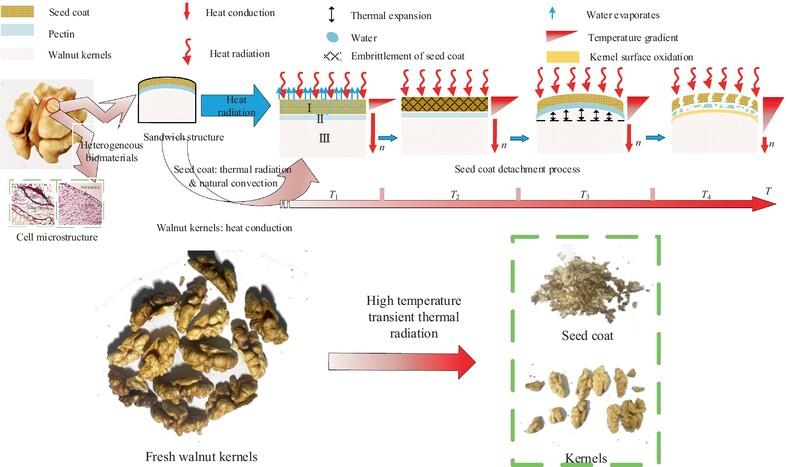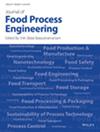Mechanism of seed coat removal of walnut kernel by high temperature transient thermal radiation and experimental evaluation
Abstract
The traditional alkaline peeling method generates high-salinity wastewater, posing significant environmental risks. To avoid water waste and chemical use, a dry method using high-temperature thermal radiation was explored for removing walnut skins. The mechanism of the high-temperature thermal radiation dry method for removing walnut skins was revealed by studying the physical properties of walnut kernels. Research on the performance of the peeling device identified the optimal parameters: an infrared emitter surface temperature of 600°C, a radiation time of 20.7 seconds, and a distance of 129.46 mm between emitters, achieving a 95.18% skin removal rate with only 0.8% moisture loss and a quality score of 96.82. Raman spectroscopy showed that this method increased the unsaturated fatty acid content of walnut kernels by 27.26%, greatly enhancing their quality. SEM analysis revealed different microstructural changes between skins removed by infrared and alkaline methods, revealing the differences in their peeling mechanisms. These findings provide a scientific foundation for developing thermal radiation dry peeling technology and devices.
Practical applications
The removal of walnut skins is an essential process for enhancing the added value of products. However, current industrial peeling methods such as hot alkaline peeling and steam peeling are water and energy-intensive industries, generating large amounts of wastewater that negatively impact the environment. There is an urgent need to develop an efficient, green, and environmentally friendly dry peeling technology for walnut kernels in the food industry to replace traditional chemical peeling methods. The high-temperature thermal radiation dry peeling technology provides a new approach that avoids the use of water and chemical reagents while maintaining high product quality after peeling. Research focuses on the theoretical study and several key points of dry peeling technology for achieving walnut kernel peeling. The research results provide scientific basis for the replacement of traditional alkaline peeling with high-temperature thermal radiation dry peeling technology and offer theoretical support and reference for the development and optimization of related equipment.


 求助内容:
求助内容: 应助结果提醒方式:
应助结果提醒方式:


